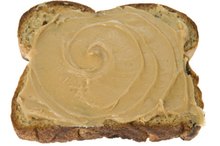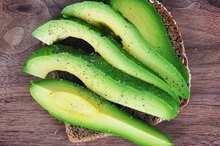Signs & Symptoms of Iron Deficiency for Male Teenagers
An iron deficiency is the No. 1 nutritional disorder in the world, and teenagers are at a particular risk for developing it. During adolescence, teens may experience rapid growth spurts, increasing their needs for iron and other nutrients, and if these needs are not met, they can develop a vitamin or mineral deficiency. While an iron deficiency is more common among teenage females due to menstruation, male teens can develop it as well.
Contributing Factors
If a male teenager develops an iron deficiency, it is probably because he is growing quickly and not making the necessary adjustments to his diet to increase his iron intake. However, certain factors can contribute to this nutritional disorder or make it more likely to occur. If you participate in long-distance running, this can put you at a risk for low iron levels. You are also at a greater risk if you are a strict vegetarian, on a weight-loss diet or have inconsistent eating habits; the latter can also increase your chances of developing other nutritional deficiencies.
- If a male teenager develops an iron deficiency, it is probably because he is growing quickly and not making the necessary adjustments to his diet to increase his iron intake.
- You are also at a greater risk if you are a strict vegetarian, on a weight-loss diet or have inconsistent eating habits; the latter can also increase your chances of developing other nutritional deficiencies.
Signs and Symptoms
How to Test Your Iron Level at Home
Learn More
The most-common signs and symptoms of an iron deficiency are fatigue or a lack of energy, shortness of breath, headaches, dizziness and irritability. You may also experience unintentional weight loss, feelings of weakness and be more susceptible to infections and illnesses. Your performance in school and on your homework may suffer due to exhaustion and a decreased ability to concentrate or remember things. If you believe you may be deficient in iron, make an appointment to see your doctor, and tell him the symptoms you have been experiencing.
- The most-common signs and symptoms of an iron deficiency are fatigue or a lack of energy, shortness of breath, headaches, dizziness and irritability.
- Your performance in school and on your homework may suffer due to exhaustion and a decreased ability to concentrate or remember things.
Iron-Deficiency Anemia
If your iron deficiency remains undiagnosed, it can become severe, and you may then develop iron-deficiency anemia. This is the most-common form of anemia, and its most common cause is an iron-poor diet. Iron-deficiency anemia has similar signs and symptoms to an iron deficiency, but you may also experience blood in your stools, brittle nails, a decreased appetite, pale skin, a sore tongue or strange food cravings. The whites of your eyes may also become pale or look bluish in color. It is imperative to seek medical attention if you suspect you have an iron deficiency or iron-deficiency anemia, since a prolonged nutritional disorder may affect your growth and development.
- If your iron deficiency remains undiagnosed, it can become severe, and you may then develop iron-deficiency anemia.
Prevention and Additional Considerations
Iron Dosages for Anemia With Bruising
Learn More
You can prevent an iron deficiency by including many iron-rich foods in your diet. Choose from items like lean meat, spinach, raisins, dried beans, molasses, salmon, tuna, whole-grain breads and chicken. If you eat plant-based sources of iron, consume vitamin C along with them to increase iron absorption. Male teens between the ages of 14 and 18 need 11 milligrams of iron a day, according to the Centers for Disease Control and Prevention. Always talk to your doctor before making changes to your diet or taking new supplements.
- You can prevent an iron deficiency by including many iron-rich foods in your diet.
Related Articles
References
- MedlinePlus: Iron in Diet
- TeensHealth: Anemia
- MedlinePlus: Iron Deficiency Anemia -- Children
- None
- Iron deficiency without anaemia is a potential cause of fatigue: meta-analyses of randomised controlled trials and cross-sectional studies - PubMed
- None
- None
- None
- Iron-Deficiency Anemia | NHLBI, NIH
- How we diagnose and treat iron deficiency anemia - PubMed
- Correlation of pallor with hemoglobin levels and clinical profile of anemia in primary and middle school children of rural Telangana | Regina | International Journal of Contemporary Pediatrics
- How we diagnose and treat iron deficiency anemia - PubMed
- Correlation of pallor with hemoglobin levels and clinical profile of anemia in primary and middle school children of rural Telangana | Regina | International Journal of Contemporary Pediatrics
- None
- Iron deficiency anaemia - PubMed
- Is There Any Correlation between Migraine Attacks and Iron Deficiency Anemia? A Case-Control Study
- Iron deficiency anaemia - PubMed
- (PDF) Understanding idiopathic intracranial hypertension: Mechanisms, management, and future directions
- Anemia as an Independent Predictor of Adverse Cardiac Outcomes in Patients with Atrial Fibrillation
- Iron deficiency anaemia - PubMed
- Iron deficiency anaemia - PubMed
- Iron deficiency in chronic heart failure: an international pooled analysis - PubMed
- None
- None
- The Role of Vitamins and Minerals in Hair Loss: A Review - PubMed
- Iron Plays a Certain Role in Patterned Hair Loss
- Oral manifestations and blood profile in patients with iron deficiency anemia - PubMed
- Effects of Iron Deficiency on the Oropharyngeal Region: Signs, Symptoms, and Biological Changes | SpringerLink
- Restless Leg Syndrome: A Neglected Diagnosis
- The prevalence and impact of restless legs syndrome on patients with iron deficiency anemia - PubMed
- Spoon Nails - StatPearls - NCBI Bookshelf
- Spoon Nails - StatPearls - NCBI Bookshelf
- Pica as a manifestation of iron deficiency - PubMed
- Association between iron-deficiency anemia and depression: A web-based Japanese investigation - PubMed
- Iron Deficiency and Risk of Maternal Depression in Pregnancy: An Observational Study - PubMed
- Iron deficiency and susceptibility to infections: evaluation of the clinical evidence - PubMed
- Fatigue and acute/chronic anaemia - PubMed
- Iron deficiency anaemia - PubMed
- Vitamin C (Ascorbic Acid) - StatPearls - NCBI Bookshelf
- Iron Bisglycinate Chelate and Polymaltose Iron for the Treatment of Iron Deficiency Anemia: A Pilot Randomized Trial
- Iron-deficiency anemia | womenshealth.gov
- Iron-Deficiency Anemia | NHLBI, NIH
Writer Bio
Lynne Sheldon has over 12 years of dance experience, both in studios and performance groups. She is an avid runner and has studied several types of yoga. Sheldon now works as a freelance writer, editor and book reviewer. She holds a Bachelor of Arts in English and art history from Boston University and recently completed her Master of Fine Arts in writing from Pacific University.









